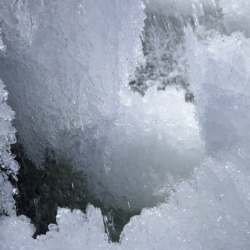
The release of warm, stagnant water from the deep Arctic Ocean and Nordic Seas played a role in ending the last Ice Age within the Arctic region. The study examined how the circulation of the ocean north of Iceland, the combined Arctic Ocean and Nordic Seas, changed since the end of the last Ice Age.
Today, the ocean is cooled by the atmosphere during winter, producing large volumes of dense water that sink and flush through the deep Arctic Mediterranean. However, in contrast to the vigorous circulation of today, the research found that during the last Ice Age, the deep Arctic Mediterranean became like a giant stagnant pond, with deep waters not being replenished for up to 10,000 years.
This is thought to have been caused by the thick and extensive layer of sea ice and fresh water that covered much of the Arctic Mediterranean during the Ice Age, preventing the atmosphere from cooling and densifying the underlying ocean.
Dr David Thornalley (UCL Geography) said: "As well as being stagnant, these deep waters were also warm. Sitting around at the bottom of the ocean, they slowly accumulated geothermal heat from the seafloor, until a critical point was reached when the ocean became unstable.
"Suddenly, the heat previously stored in the deep Arctic Mediterranean was released to the upper ocean. The timing of this event coincides with the occurrence of evidence for a massive release of meltwater into the Nordic Seas. We hypothesize that this input of melt water was caused by the release of deep ocean heat, which melted icebergs, sea-ice and surrounding marine-terminating ice sheets."
This study highlights the important impact that changes in ocean circulation can have on climate, due to the ocean’s capacity to redistribute vast quantities of heat around the globe. For example, scientists are currently concerned that ongoing changes in ocean circulation may result in warmer subsurface water that will cause enhanced melting and retreat of certain ice sheets in Greenland and Antarctica.
